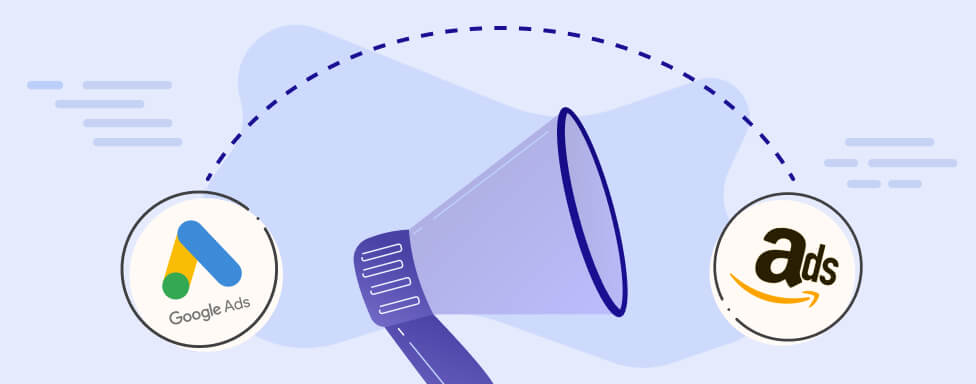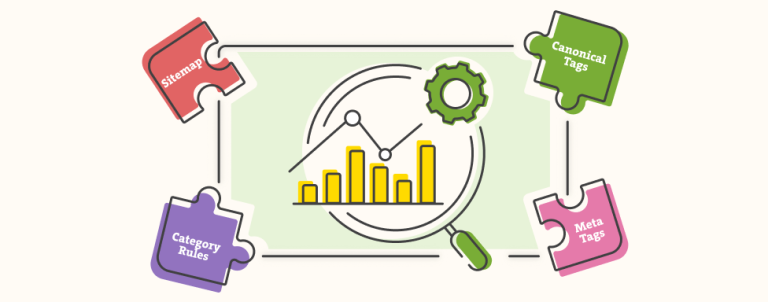Google Ads for Amazon products is definitely not a new advertising strategy but has recently become more popular among Amazon sellers. As the Amazon marketplace becomes more competitive, sellers are looking for new ways to find customers and drive traffic directly to their listings without battling it out on crowded Amazon search results pages.
Many shoppers prefer to start their customer journey on Google even if they intend to purchase on Amazon. Sellers seem to be more aware of this. Google is Amazon’s (Amazon.com) significant traffic source, with approximately 22% share in all traffic sources. Amazon is one of the biggest Google clients, with an estimated ad spend of around 11 billion dollars in 2022. The strong connection between these two platforms may prompt you to consider how your business can benefit.
Why consider Google Ads for Amazon products?
How to Run Google to Amazon?
Different strategies can be used to drive traffic from Google to Amazon. This post will focus on the ones that have given us the best results. If you are tight with the budget, we suggest you prioritize the first strategy, which most likely will provide you with the most conversions. If you have a bigger budget and an established brand, you can also go with two other strategies:
-
-
- Targeting keywords that include “Amazon”: These ads will most likely have a very high CTR based on our experience, even up to 30%. You target people searching for products like yours on Google but planning to buy on Amazon. Keywords that include “Amazon” are less expensive because less competition is bidding on them. The volume is lower, but the intent is very high. Higher CTR will also lower your CPC, sometimes even up to 50%, compared to Amazon’s.
- Targeting keywords without “Amazon” in the query: With this strategy, you can expect a high CTR, up to 15%. The key factor here is that people can actually see “Amazon” in the URL. Let’s not forget that many shoppers come to Google just to shop on Amazon. Clicks are expected to be a little more expensive than when someone is searching for “Amazon” specifically, but they are still cheaper than on Amazon.com.
- Branded Keywords: Once you have an established brand, you should start protecting it on Google by targeting your Branded Keywords. Since some customers will first look for it there, sending your Google branded traffic to Amazon is a great tactic if you sell only there.
-
Google Campaigns Set Up
Before starting, it is essential to set up Amazon attribution. This way, you can track results since Google Ads cannot track what happens after the ad clicks and the customer lands on Amazon pages. We suggest starting with Google Search Ads and then expanding the structure with other campaign types if it makes sense profitability-wise. Since the way people are searching on both platforms is probably very similar, a good idea is to start with KWs that perform well on Amazon. Then, you can use Keyword Planner to adjust or expand the list.
The ads can drive traffic to Amazon product detail pages or your storefront pages. PDP is a better option if you target highly specific terms. For example, when a customer wants to buy a specific product and your goal is product ranking. If the term is generic and you have different product variations, sending the traffic to the storefront pages may be better. There, you can target a specific category and build brand awareness.
An important thing to consider here is that PDP’s competitor’s ads may steal your sale, especially if their offer has a better price and rating while your storefront pages exclusively feature your brand’s products.
The campaign structure depends on the available budget, but the same rules apply to any Google Ads campaign – be as specific as the budget allows you.
Final Thoughts
Google to Amazon is a great strategy to add to your existing Amazon advertising structure. It should be considered part of a broader advertising strategy that can help you build brand awareness by reaching customers outside of Amazon. If you are good with the budget, you can test it immediately. Otherwise, it should be the focus once you have an established brand and the budget for driving external traffic.
Before you start, it is important to set your expectations right. If your Amazon campaigns don’t perform well, you shouldn’t expect traffic outside of Amazon to convert better. That is simply because conversion rates from Google traffic are generally lower than on Amazon. You may have some listing-related issues, or your offer needs to be more competitive. If that is the case, you should probably be focusing on fixing that first.
If your business goal is strictly the profitable ROAS, we suggest focusing on Amazon advertising and optimizing for profitable ACOS and ROAS. Let’s not forget that the main goal of sending traffic from Google is to improve organic ranking through extra traffic & expanded visibility.



